British Playing Cards
British Playing Cards Ltd was the predecessor of Universal P.C.Co. and involved Alf Cooke of Leeds and Bemrose of Birmingham, and maybe one or two other printing firms.
British Playing Cards Ltd, c.1920 - 1925
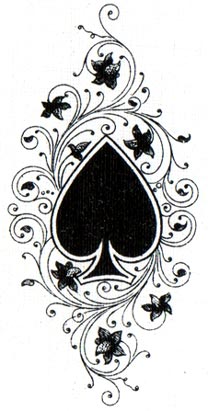
This company was the predecessor of Universal Playing Card Co. and involved Alf Cooke of Leeds and Bemrose of Birmingham, and maybe one or two other printing firms. They operated from c.1920 until 1925, when Universal P. C. Co. started. Their court cards are rather odd, as they take a few of the traditional features and disperse them in very non-traditional figures. They are similar to the courts used by Dondorf during this period.
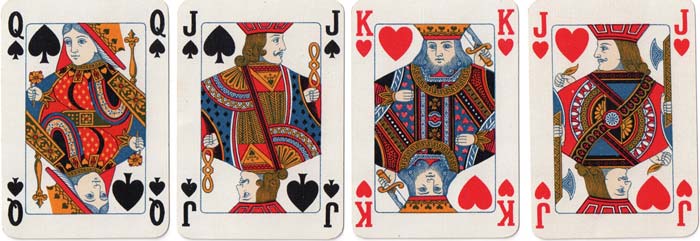
Above: court cards by B. Dondorf, c.1920s click image to see comparison.
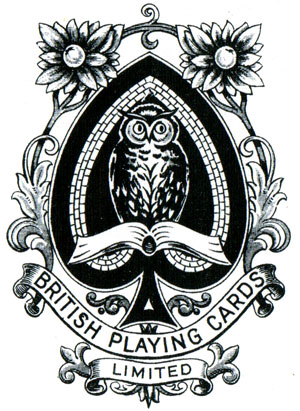
One unusual feature of the courts is that they were altered quite a lot in the short period they were used. Below is a pack of Linési wide-size cards with box and tax wrapper, stamped in red. This brand was clearly copying the brands of other makers such as Goodall’s Délési for W. H. Smith and their Linette brand. De La Rue had Flaxette and Waddington had Twillese. They were all originally made with a linen finish to help dealing and shuffling. The wide AS is very like the anonymous one used later by Universal and the bridge-size one is the named design.
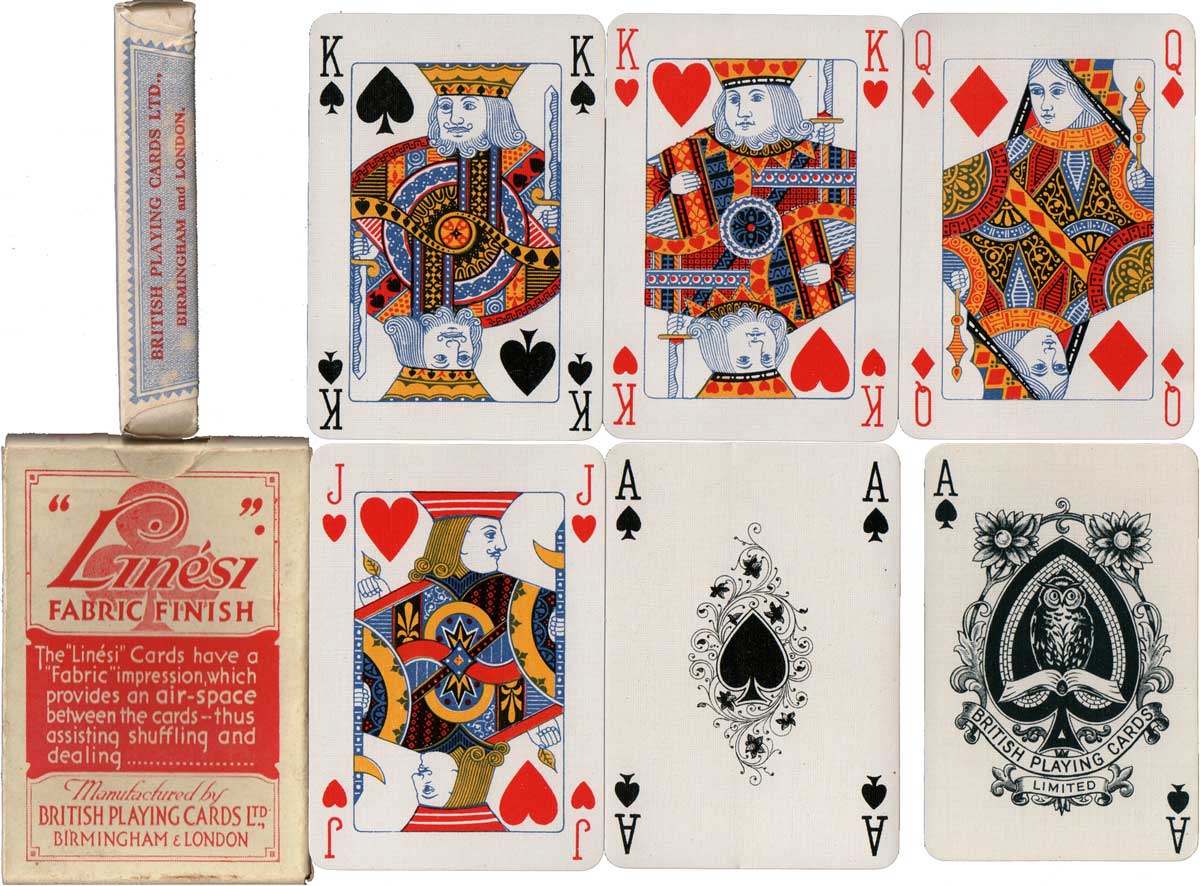
Above: pack of Linési wide-size cards with box and tax wrapper, stamped in red. The wide AS is very like the anonymous one used later by Universal Playing Card Co. and the bridge-size one is the named design.
Court Card Variations
The alterations to the designs that can be found are unusual in that most of the design is retained but the position of the heads is altered. This applies only to the kings and jacks. Also there are different sizes of hats on the jacks and variation in the colours. A few examples are given below. Compare the head position of the kings with those above.
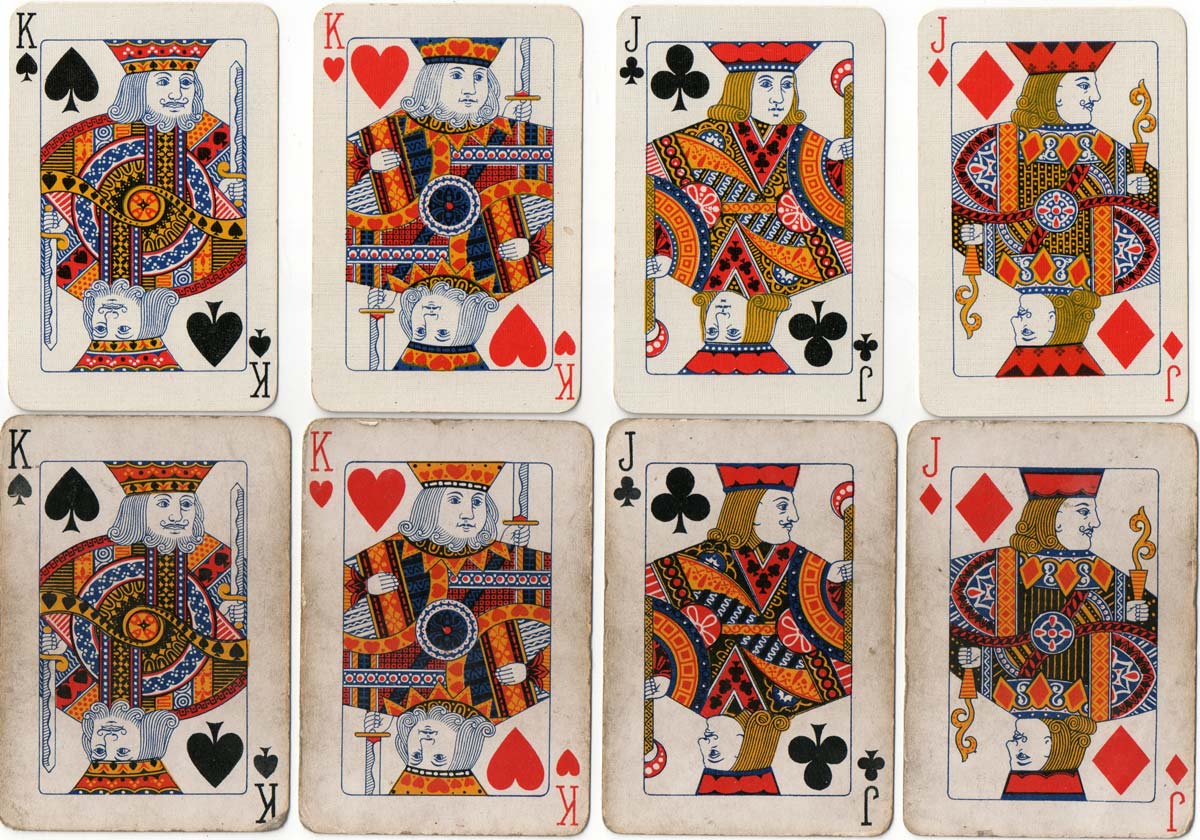
Above: the KSs above are the same, the KH’s crown has more blue on it in the top row, the jacks’ hats differ in size and the head position of the JC is different.
Brands (Aspen, Bijou, Château, Linési, Luxor)
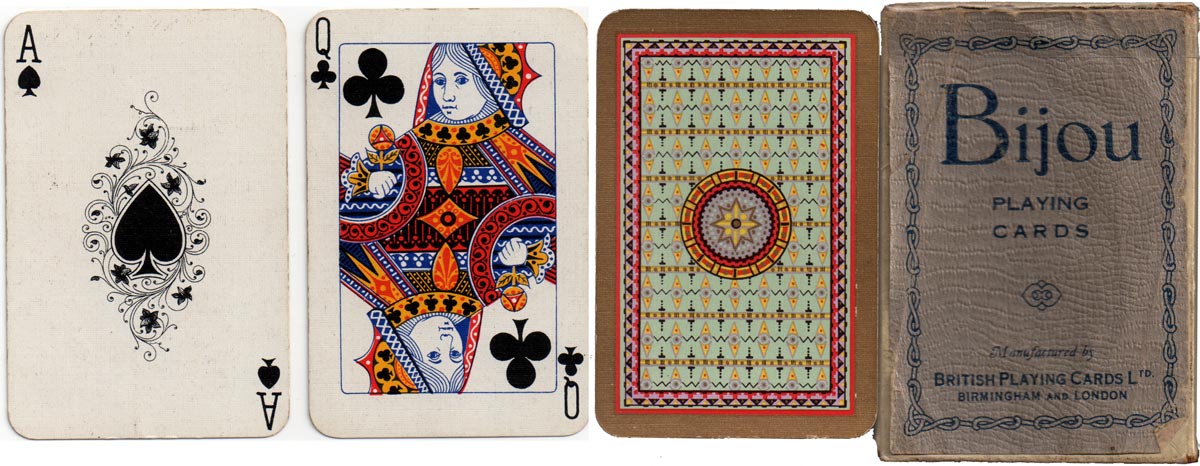
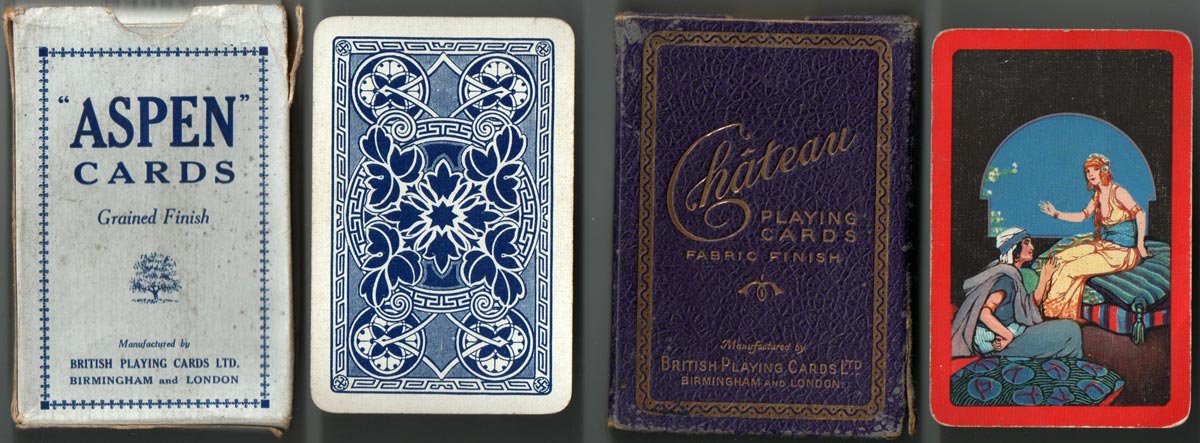
Above: various brands. The Bijou bridge-size brand in a slide-in box with an unusual crocodile-skin-finish label on the front. The back design is quite like the one from the Luxor pack.
Back Designs
There is a variety of back designs, both pictorial and decorative, some of which are inspired by those of other makers. The wide-size Dutch design is very like one by Goodall. There is one design of joker.
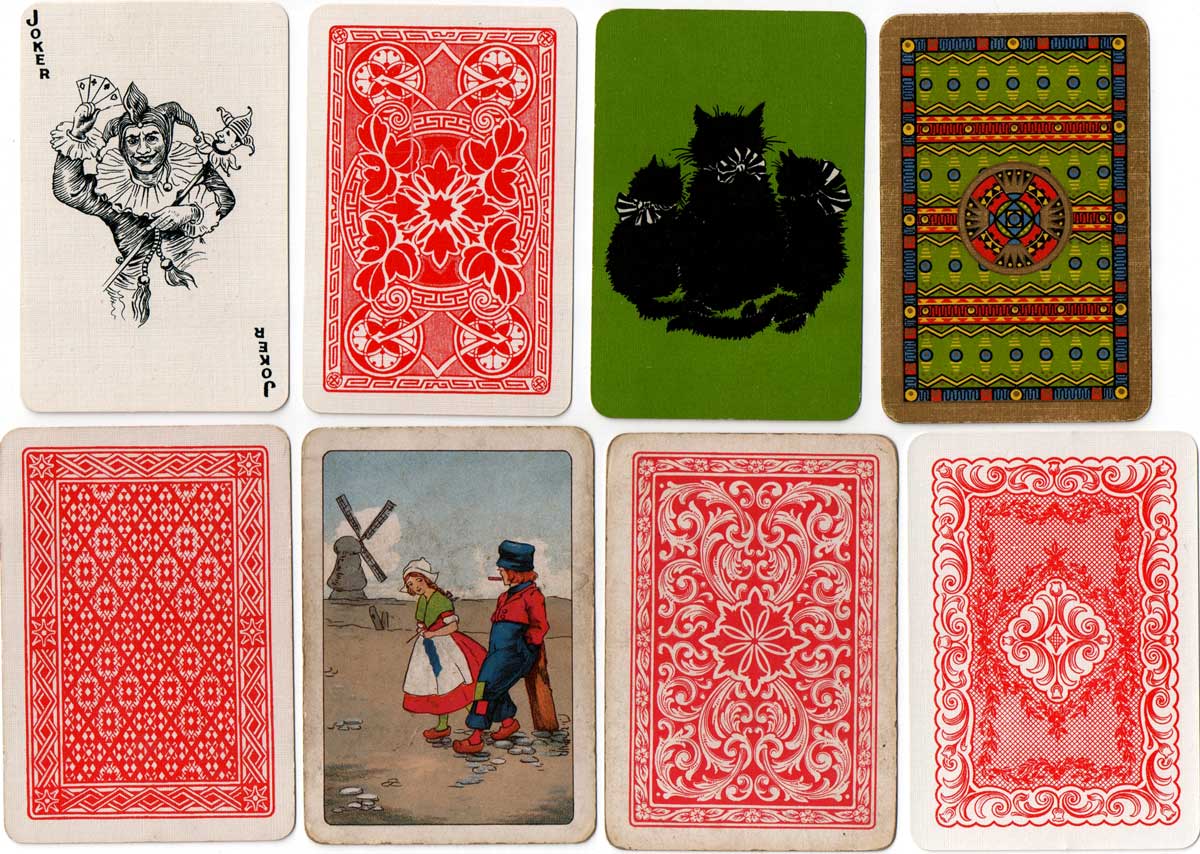
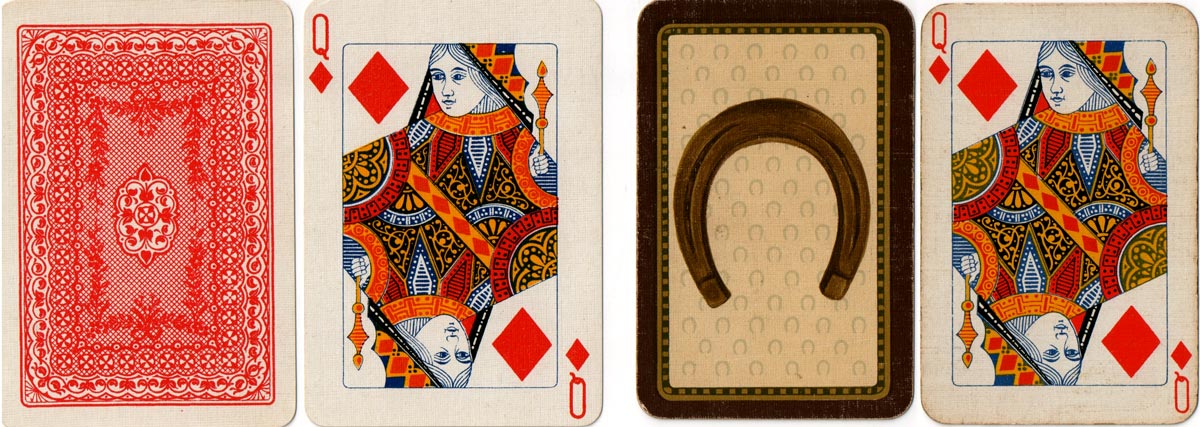
Above: the design top right comes from a pack in a side-folding box, similar to those used by Waddington in their Barribal series; the name on the box is Luxor. The design is more Central American than Ancient Egyptian! All the cards on the top row are bridge-size, the middle row are all wide and the bottom row shows wide and bridge-size examples.
REFERENCES & CREDITS
Lodge, Ken: The Standard English Pattern (second revised and enlarged edition), Bungay, Suffolk, 2010
Images and text kindly supplied by Ken Lodge.
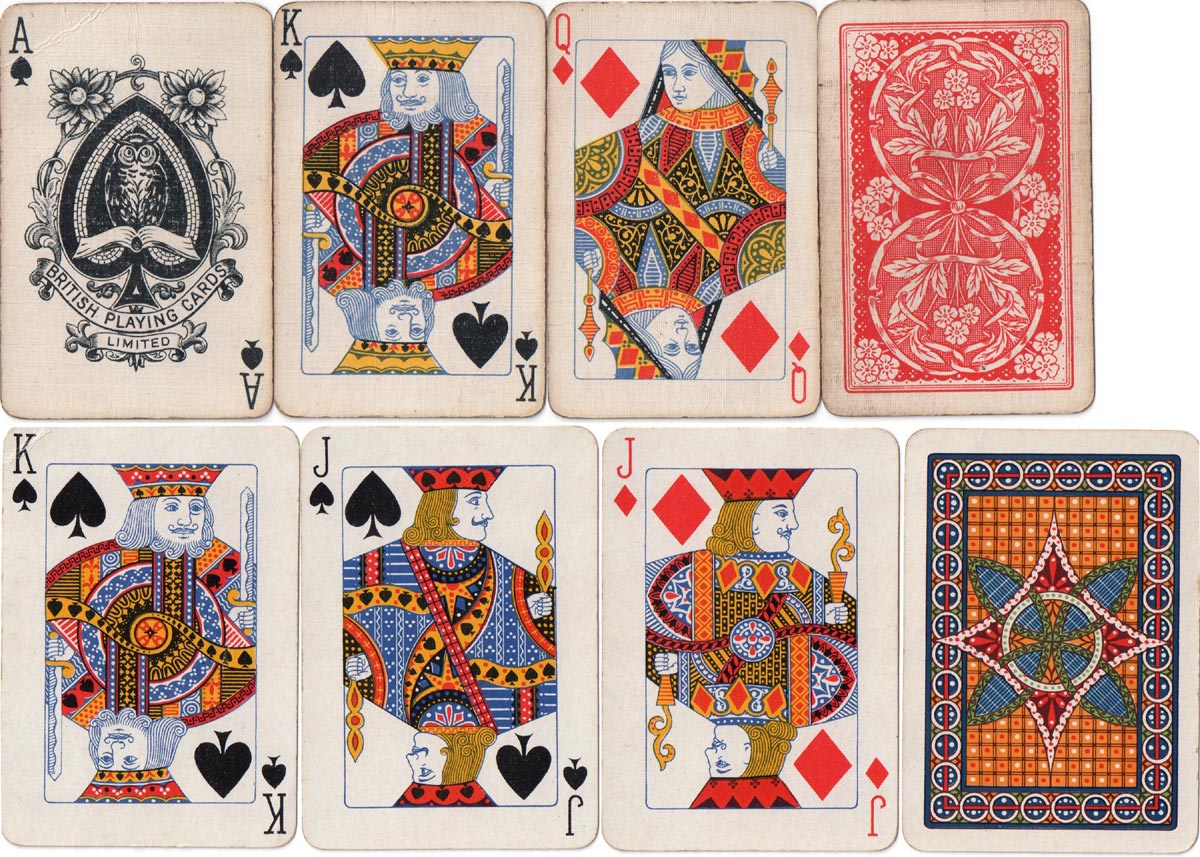
Above: the box for the wide pack is blank except for the back design sample.

By Simon Wintle
Member since February 01, 1996
Founder and editor of the World of Playing Cards since 1996. He is a former committee member of the IPCS and was graphics editor of The Playing-Card journal for many years. He has lived at various times in Chile, England and Wales and is currently living in Extremadura, Spain. Simon's first limited edition pack of playing cards was a replica of a seventeenth century traditional English pack, which he produced from woodblocks and stencils.
Trending Articles
Popular articles from the past 28 days
Related Articles
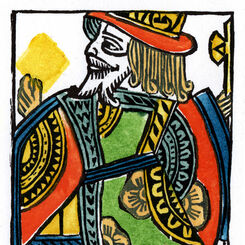
Woodblock and Stencil King of Diamonds
A limited edition art print of the King of Diamonds 1984 woodblock joker.
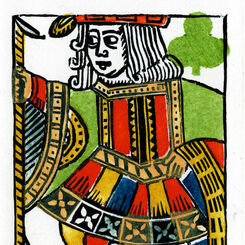
Woodblock and Stencil Jack of Clubs
A limited edition art print of the Jack of Clubs 1984 woodblock joker.
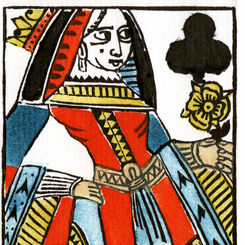
Woodblock and Stencil Queen of Clubs
A limited edition art print of the Queen of Clubs 1984 woodblock joker.
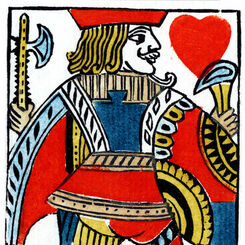
Woodblock and Stencil Jack of Hearts
A limited edition art print of the Jack of Hearts 1984 woodblock joker.
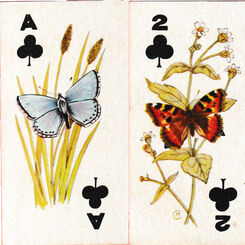
Sweetule Natural History cards
Small cards featuring natural history subjects, given away with packets of sweet cigarettes.
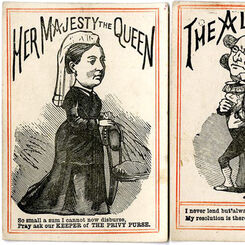
Lend Me Five Shillings
or “Her Majesty’s Privy Purse” - a merry round-the-table game published by D. Ogilvy.
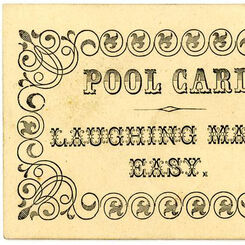
Laughing Made Easy
a Victorian card game published by D. Ogilvy.
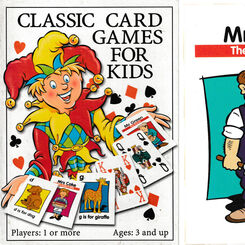
Classic Card Games for Kids
A boxed set of playing cards, Happy Families and an alphabet pack with rules for 22 games.
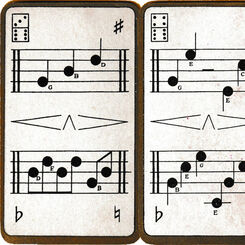
So-Lah – A Game of Music
An early 20th century domino-type musical card game by Goodall.
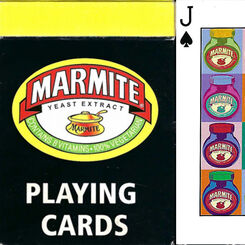
Marmite
Fifty-Four images celebrating a UK savoury spread, that has been around one hundred and twenty two y...
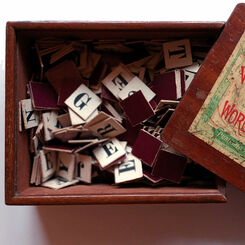
Word Making and Word Taking
How crossword and spelling games became popular.
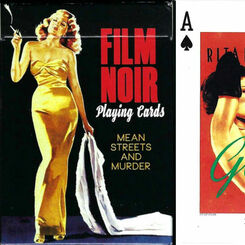
Film Noir
A deck of 55 cards, celebrating hard boiled heroes, wise-cracking women, mean streets, guns and gums...
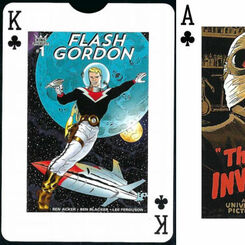
Science Fiction
A deck of 55 cards, celebrating a time when Science Fiction truly was, Science Fiction.
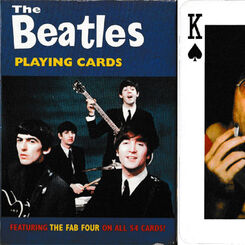
The Beatles playing cards
Two packs featuring photos of The Beatles issued by the same publisher in 2004 and 2005.
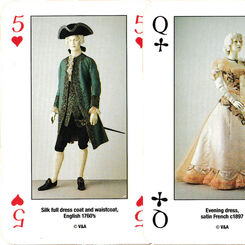
Costume Playing Cards
Four centuries of costumes from the Costume Court at the Victoria and Albert Museum.
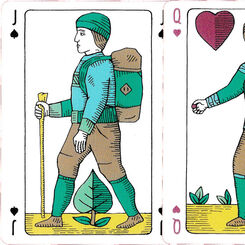
Commoners playing cards
Created by Ian Cumpstey dedicated to the common land and the countryside.
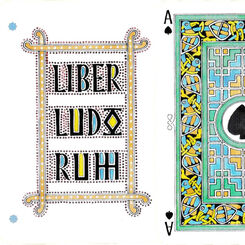
Liber Ludorum
Liber Ludorum playing cards created by Ian Cumpstey in the insular style, United Kingdom, 2019.
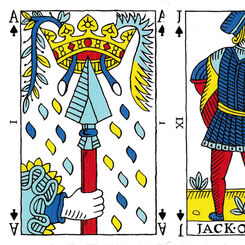
Pike and Clover playing cards
Pike and Clover playing cards created by Ian Cumpstey, Cumbria, UK, 2018.
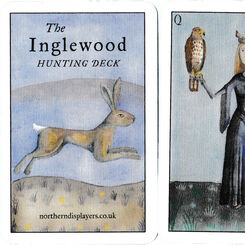
Inglewood Hunting Deck
Inglewood Hunting Deck created by Ian Cumpstey, United Kingdom, 2023.
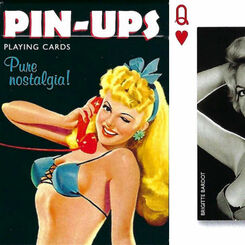
Pin-Ups
A deck of 55 cards celebrating a golden age of cheeky, naughty, bold and curvy ladies in film.
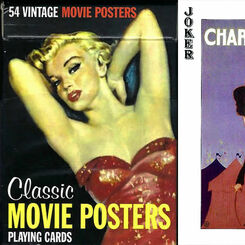
Classic Movie Posters
A deck of 55 cards presenting vintage classic movies and their stars.
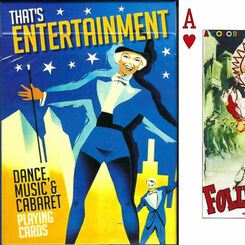
That’s Entertainment
A deck of 55 cards celebrating 20th Century vaudeville, musicals and cabaret.
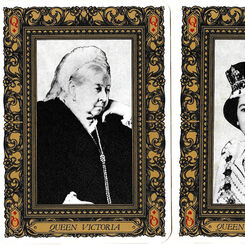
British Monarchs
Commemorating the royal wedding of Charles, Prince of Wales to Lady Diana Spencer on the 29th
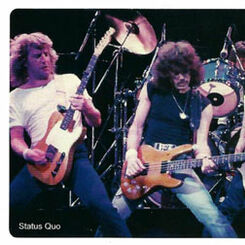
Rock & Pop Legends
Stunning photos of a selection of US and UK music artists.
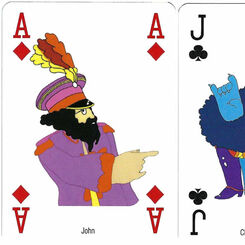
The Beatles • Yellow Submarine
A colourful deck celebrating the 1968 animated feature film based on the Lennon/McCartney song of th...
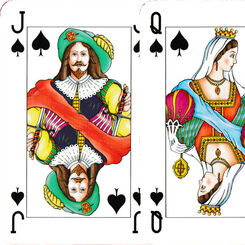
Dutch Court playing cards
Games & Print Services’ version of the Dutch pattern.
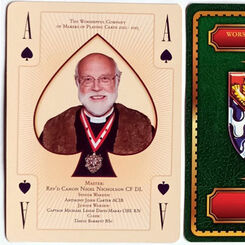
Past Masters’ Association Presentation Pack
The Worshipful Company of Makers of Playing Cards Past Masters’ Association Presentation Pack, 2013....
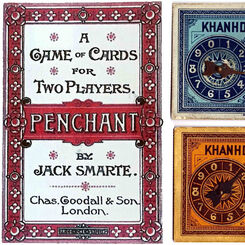
The Search for New Games in the late 19th century
A few new games survived and are still around today; most came and went and are only witnessed in th...
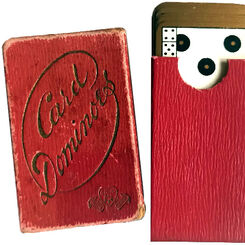
Miniature Card Dominoes
A miniature set of Goodall domino cards (5.9 x 3.5 cms) still in perfect condition.
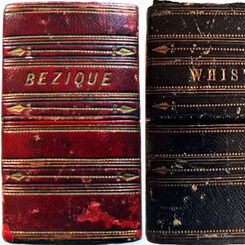
T. Drayton & Son
Bezique and Whist boxed sets by T. Drayton & Son, London, c.1875.
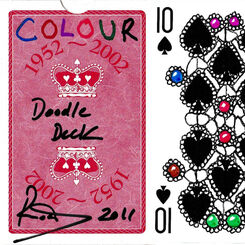
Colour doodle deck
“1952-2002 commemorative deck” customised with doodles by an uncredited artist, UK, 2011.
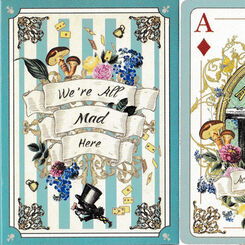
Alice in Wonderland: we’re all mad here
Alice in Wonderland themed playing cards, UK, 2020.
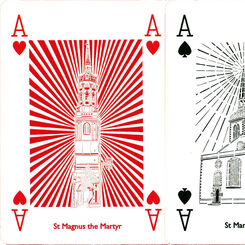
Wren 300 playing cards
Papercuts by Chloe Campbell of the 52 Wren churches in the City of London.
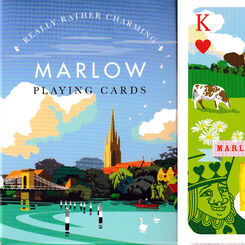
Marlow playing cards
Visitor attractions and businesses to be found in Marlow, Buckinghamshire.

Playing Politics 2010
“Playing Politics ’10: With no expenses spared” featuring caricatures by Oliver Preston, published b...
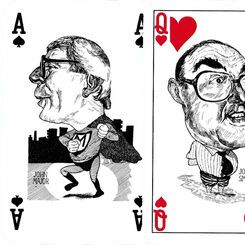
Playing Politics ’92: Pack of lies
Playing Politics ’92: Pack of lies with caricatures by Grant Robertson, UK.
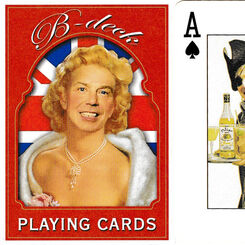
B-Deck
“B-Deck” scurrilous playing cards poking fun at a former UK prime minister.
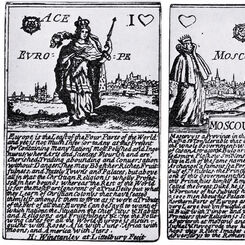
Winstanley Geographical cards
Facsimile of Winstanley’s Geographical cards produced by Harold & Virginia Wayland, 1967.
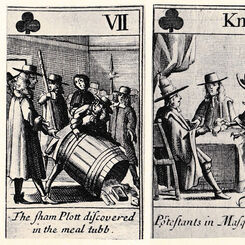
Meal Tub Plot
Meal Tub Plot playing cards [facsimile] with 17th century sketches by Francis Barlow.
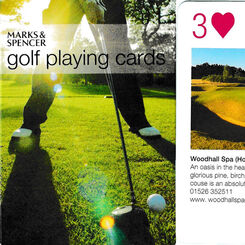
Golf playing cards
Golf playing cards published by Marks & Spencer, UK.
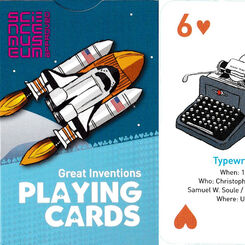
Great inventions playing cards
Great inventions playing cards designed by Gary Wyatt, United Kingdom, 2011.
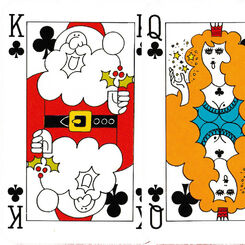
Christmas 1980 playing cards
Festive courts on a Waddingtons pack designed to celebrate Christmas 1980.

Gone to Pot: Gardener’s playing cards
‘Gone to Pot’: special playing cards for keen gardeners, United Kingdom.
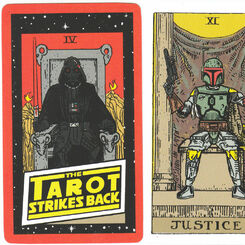
The Tarot Strikes Back
Roy Huteson Stewart's The Tarot Strikes Back combines Star Wars with Rider-Waite tarot imagery.



